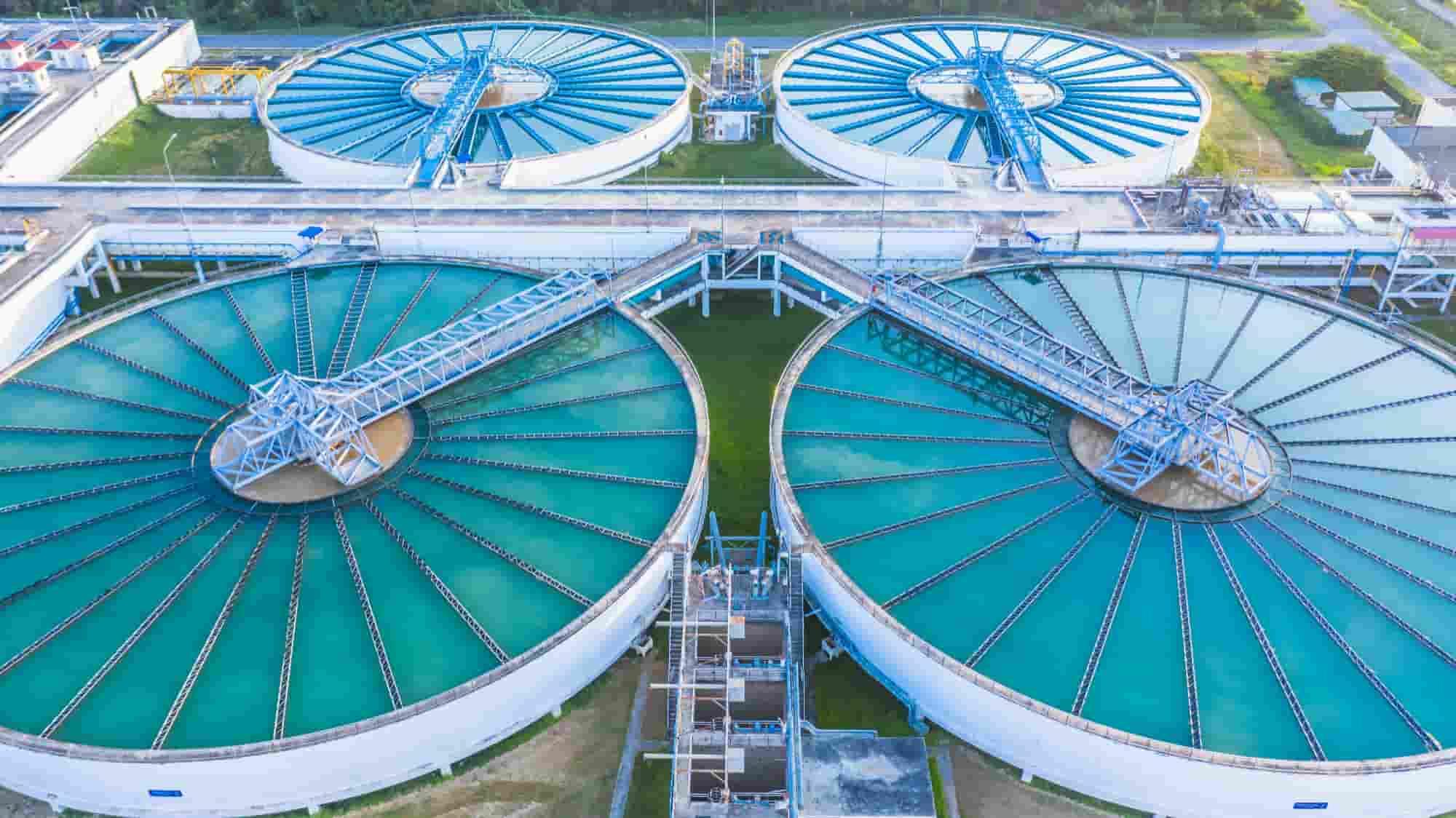ממומן
The Role of Bioculture in Green and Circular Wastewater Management

Introduction
One of the most important developments in environmental engineering has been the transition from linear treatment-disposal models of wastewater management to circular resource-recovery systems. This transformation is where bioculture technology comes in, allowing for facilities to transition from waste processing plants to resource recovery centers. This new paradigm is in line with global sustainability goals and circular economy approaches in which waste flows are transformed into precious nutrients through biological means. Linking up to sophisticated microbial modes creates prospects for net-zero recovery of resources with minimal losses during these processes while keeping treatment efficacy and environmental protection.
Basic Principle of Circular Wastewater Management
Circular wastewater management is a paradigm shift from the linear approach, where water is a one-time use resource and waste products are disposed. In this regard, the circular model considers wastewater as a resource stream- a stream of water, nutrients, energy, and other valuable materials that can be recovered and recycled. The basis of this methodology is that it relies on biological processes, also known as bioprocesses, and microorganisms are the dominant actors in waste-to-resources conversion. Recovering water allows sustainable supplies of water for multiple reuse applications, which can both reduce the extraction of freshwater and improve water security. Recovering nutrients from waste takes these elements from wastewater for agricultural and industrial purposes to complete nutrient cycles while decreasing reliance on synthetic fertilizers.
It utilizes the calorific value of organic matter, turning treatment plants into energy producers instead of consumers. Material recovery is able to obtain valuable and precious materials that can be used for industrial and commercial applications, thus generating economic value from waste streams. The suite of these recovery processes adds synergistic benefits, where the different streams of resources effectively aid one another, together leading to a better overall (economic) performance of the system. Individuals from a range of bioculture methodologies have made these recovery processes possible by utilising biological systems that not only treat wastewater but also recover resources, thus closing the loop on wastewater management.
Microbial systems for augmented resource recovery
Bioculture systems, when used at an advanced level, can provide superior resource recovery due to the optimization of the microbial processes. Our anaerobic digestion and energy recovery system is assisted by unique microbial communities that optimize biogas production. This culture enhances hydrolysis of complicated organic matter, intermediates of acidogenesis and methanogenesis stages and increases both the amount of biogas and quality of biogas substrate. Microbial processes used for nutrient recovery are characterized by the condensation and conversion of nitrogen and phosphorus into forms that can be further recovered. Nutrient recovery via biological phosphorus removal systems has the potential to recover phosphorus as high-value valuable fertilizer products, and the liberation of nitrogen by nitrifying and denitrifying bacteria depletes nutrient levels in the wastewater bodies; thereby, utilizing these microorganisms can effectively remove nutrients.
Another primary recovery pathway is water reuse, whereby biological treatment yields high-quality effluent for reuse. An efficient water treatment through microbial processes provides a water quality that meets reuse standards for organic matter, nutrients, and emerging contaminants. In contrast with traditional processes and for the biological treatment strategy, this process has the advantages that it needs lower chemical feed, leading to less chemical residuals in recycled water. Material recovery is enabled through microbial systems that address the need to extract and concentrate specific compounds. Optimised biological treatment systems help in the recovery of cellulose from screening systems, metal precipitation via biological means, and various other valuable materials.
Integration with Renewable Energy Systems
Technology that integrates bioculture with wastewater treatment or renewable energy systems Optimized microbial communities for anaerobic digestion produce substantial biogas, which can be used to produce heat and electricity through combined heat and power generation, reducing facility energy costs and carbon footprint. Microbialigs digestion processes, manages the microbiome in ways that maximize energy recovery while maintaining stability in process and treatment efficiency. Another integration opportunity is the recovery of thermal energy from wastewater streams, in which heat generated by biological treatment processes can be captured for further use.
Biological treatment-energy systems integration is not limited to direct energy generation. Microbial processes, especially anaerobic, can be controlled to run at energy neutral or energy positive, gaining more energy out of the system than required for treatment. Biological processes can use renewable electricity during times of excess generation through blending with solar and wind energy systems, while operational flexibility enables flexibility in energy demand. Biological hydrogen production and other forms of bioenergy represent a new branch of integrated natural sciences, with potential applicability of microbial systems in the general context of renewable energy.
Water Reuse and Recycling Applications
Bioculture technology is essential to support safe reuse of water for multiple applications in a sustainable manner. Agricultural irrigation is a pertinent reuse route, where biologically treated wastewater represents a source of water and nutrients for crop production. To a major extent pathogen removal and organic matter stabilisation via microbial treatment produces irrigation water that can sustain agricultural productivity while safeguarding soil and crop quality. These high quality effluents suitable for more urban reuse applications (landscape irrigation, toilet flushing, and aesthetic water uses) are produced via biological treatments that provide clear and odor-free water meeting stringent quality standards.
Another major area of application is the industrial reuse of treated wastewater, where biologically treated wastewater can serve as a freshwater substitute in a number of processes. Appropriately treated wastewater is best suited for reuse applications such as cooling water systems, process water applications, and boiler feed water, enabling reduced industrial water footprint and enhanced water security. Biological processes are the key treatment processes for indirect potable reuse through environmental buffer systems or direct potable reuse with advanced treatment. These applications necessitate consistent safe water reuse that only the multiple barrier approach in biological systems can provide as a strong barrier treatment.
Nutrient Recovery and Cycling
Biological processes in circular wastewater systems provide a means for efficient recovery and recycling of nutrients with nutrient management being a central factor. Biologically-mediated precipitation and crystallization of phosphorus recovery yields high-quality fertilizers that can substitute mined phosphorus. These recovery processes can be integrated with advanced biological phosphorus removal processes that promote the accumulation of phosphorus exceeding metabolic needs by a specialized microbial community. Nitrogen recovery uses microbial nitrification and denitrification processes to convert the nitrogen into more recoverable forms that can be used in agricultural fertilizers and industrial feedstocks.
Bioculture technology is supporting nutrient recovery processes that create a closed-loop cycle, allowing nutrients to be returned to productive use rather than ending up in the environment. This strategy does not only focus on resource conservation but also on the conservation of the environment by minimizing mining of non-renewable nutrient resources and avoiding eutrophication in water bodies. Combination of nutrient recovery and biological treatment generates synergies: of performance of treatment and recovery as better performing treatment can improve efficiency of recovery and recovered products can close the economic loop for sufficient agricultural sustainability. The future of nutrient HARVEST technology for practical use in wastewater treatment will rely on these integrated systems.
Economic Viability and Business Models
For the transition to circular wastewater management based on bioculture technology, a third factor must be taken into account: the economic viability and appropriate business models. Traditional wastewater treatment is almost always seen as a cost centre, whereas with circular approaches waste can be exploited as a resource, then circular can become revenue generating. Therapies should be packaged alongside sales of resource products into sustainable business models that diversify income sources for economic sustainability. Assessing value goes beyond direct financial returns, as this method should also encompass indicators such as lower environmental compliance costs, improved public perception and public support, and long-term resource security.
Partnership models surrounding resource exchange are so frequently associated with the implementation of circular systems. Water reuse could entail contracts between treatment facilities and water users, and nutrient recovery might develop collaborations with agricultural operations. Energy recovery may also facilitate agreements for power purchase or energy sharing agreements with local utilities. Such partnership models share costs and benefits between multiple stakeholders and thus enable circular approaches with an economic case. These business models are supported by bioculture technology, which provides resource recovery with high reliability and reproducibility at volumes that scale to market demands.
Regulatory Framework and Policy Support
Regulatory frameworks and policy environments that prioritize circular wastewater management are critical for success. Current regulation are usually aimed at limiting emissions and cleaning up pollutants before discharge, with circular approaches necessitating recognition of environmental benefits from resource recovery. Policy supports may comprise resource recovery credits, credit for avoided environmental damage when meeting regulatory obligations, and simplified review of applications for reuse. Standards and guidelines developed for reclaimed products ensure quality and safety and aid in agreement on market development.
The importance of circular approaches is fast gaining ground in terms of regulatory evolution with numerous jurisdictions creating frameworks that promote or mandate resource recovery. Water reuse regulations provide certainty in implementation as they delineate standards for a variety of applications. Abstract Nutrient management policies increasingly acknowledge recovered nutrients as a sustainable source of nutrients for agriculture while safeguard soil reservoirs and groundwater resources from nutrients losses. Policies guiding energy practices may provide some assistance for wastewater-derived renewable energy generation. Such changing regulations helps in giving more opportunities for facilities to be more circular as they can be more assured that they are operating within regualtory acceptance limits.
Community Engagement and Social Acceptance
Abstract Circular Wastewater Management is impossible to achieve without a solid Community Engagement & Social Acceptance. The public's view of water reuse, nutrient recycling and other recovery processes can be a major barrier to effective implementation. Communities need to know how safe, beneficial, and necessary the circular approaches are and education and outreach programs help provide this information. Building trust in the quality of recovered resources through transparency in operations and monitoring. Demonstration projects and pilot studies are valuable because they show how systems work in real life and the benefits they bring.
Stakeholder engagement should be integrated within and across planning and implementation processes, involving stakeholders in discussing their concerns, preferences, and community values. Not only do these multiple Circular Systems benefits—ranging from water security and resource conservation to environmental protection—present a compelling story to build community support. Confidence in circular approaches is strengthened by success stories and case studies from early adopters. Many human-centered bio-based recovery processes are intertwined with biogeochemical natural cycles as they are common processes in nature and thus serve to promote public acceptance of these sustainable solutions.
Conclusion
The treatment of bioculture represents a key enabler of circular wastewater management, moving treatment plants from being merely waste processors to resource recovery hubs. Some facilities are utilizing more rich biological processes for the recovery of water, nutrients, energy, and materials while maintaining effective treatment performance. It drives wider sustainability goals, generates economic value, and makes significant improvement in resource-related issues. Circular approaches will be at the core of sustainable wastewater management as the technology advances and the experience grows.
To learn more about in-depth experience in circular wastewater management solutions based on advanced biological processes, visit and contact the experts at Amalgam Biotech now.







